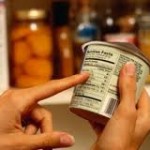Who has the time to check every supermarket purchase?
And even when you have time to read the label, can you really understand all the numbers?
Let’s stop for a moment and find out what’s really in your food.
– When buying food for the first time, maybe a few of us refer to food labeling. That’s where the nutritional information panel (NIP) comes in. It gives you a clear picture of the nutrients that are crucial for healthy eating.
NIP’s are mandatory on all packaged foods.
With its standard format, you will quickly learn to read the order of calories, proteins, total fat, saturated fat, total carbohydrates, sugar and sodium.
– The trick is to think first about which nutrients are most relevant to the product and to your dietary needs.
For example, there is no need to look into the dietary fiber when comparing 2 kinds of milk, but look into the calcium, vitamin D, or the total fat counts.
Something else!!
Compare the length of the ingredient lists between 2 same products and favor the one with fewer additives, especially artificial preservatives and colors.
For example, 2 different hummus dips can differ a lot! Some may contain over 11 ingredients.
Think about the ingredients that would be used if you made it from scratch: chickpeas, garlic, lemon juice and tahina.
As simple as that! No need to the extra ingredients!
PS: If you have dietary intolerance or allergies, you need to read carefully the ingredients list.
The guide to label:
– Order is important:
The ingredients on any nutrition label are listed in order of greatest to least quantity. So often the top 3 items reveal the nutritional quantity of the food.
– Sugar:
Look out for words like fruit juice concentrate, honey, golden syrup, sucrose, glucose, dextrose, palm sugar, maltose and corn syrup. They are all various forms of sugar.
– Fat:
Watch out for the ingredients like shortening, full-cream, coconut oil, ghee and vegetable oil. They are all fat and animal derived.
What those mean:
– Per serving:
Use this to assess your own nutrient and quantity intakes.
For example, if we look at a biscuit box, and we see the serving size is 4 crackers, then we see fat, sugar, fiber in one serving size, that means in 4 crackers (not in the whole box!)
Serving size per container is 25. That means the box contains 100 crackers.
– Total fat:
Low- fat foods must contain 3 grams or less of total fat per 100 g .
– Saturated fat:
Aim to keep this cholesterol-raising “bad fat” as low as possible. Avoid the Trans fat as well.
– Sugar:
Low sugar foods must contain no more than 5 grams of total sugars per 100g
– Salt:
Low- salt foods must contain no more than 120mg of sodium per 100g
– Dietary fiber:
Foods identified as high in fiber must have 3 grams per serving or more.
WHAT ABOUT EATING OUT??
Even though many restaurants provide nutritional panel and ingredient listings, sometimes you might have no knowledge about the ingredients when eating out or even when doing a take away meal.
All you have to do is to ask about it!
Waiters can always check with the chef.
You Are What You Eat!!


 WhatsApp us
WhatsApp us